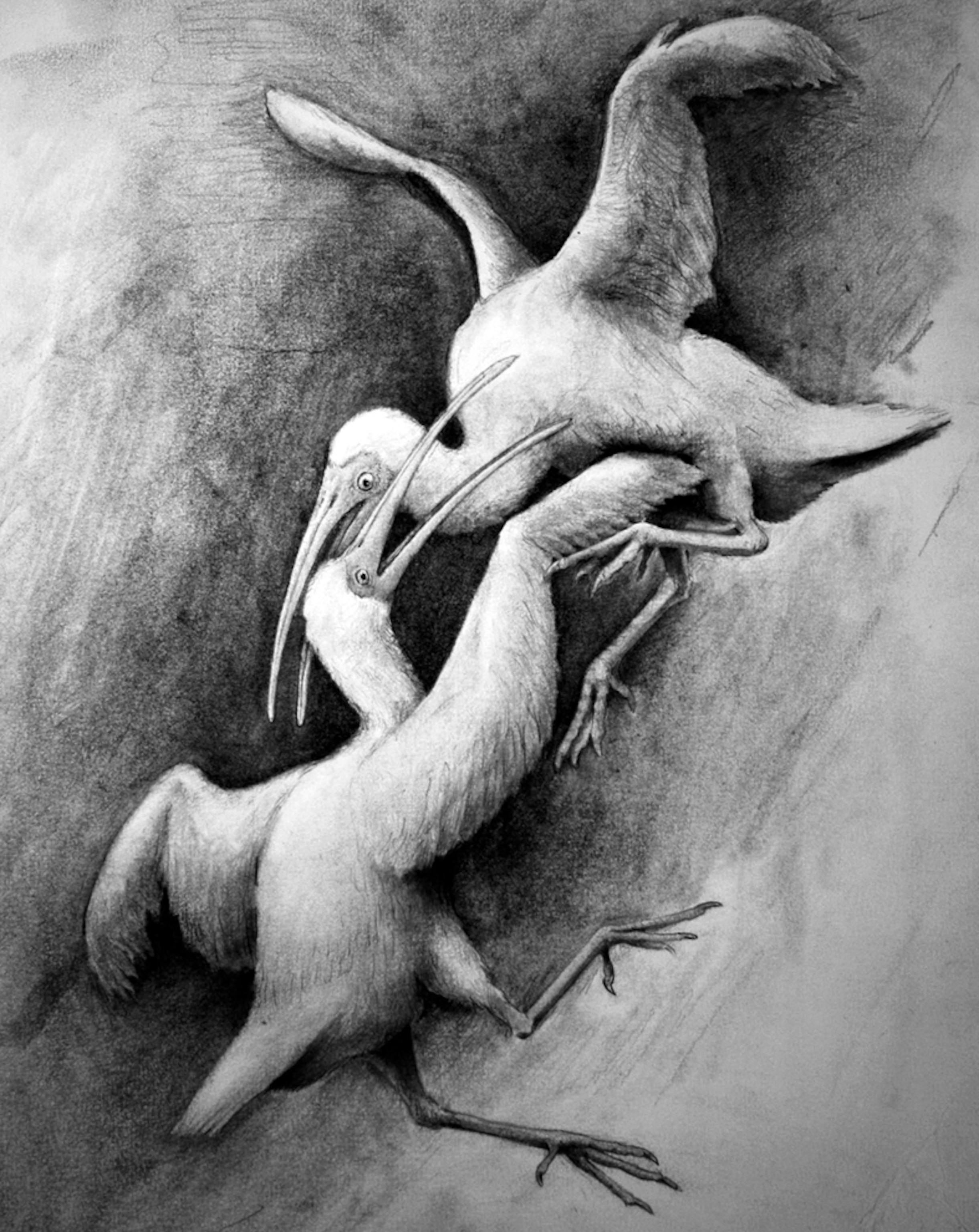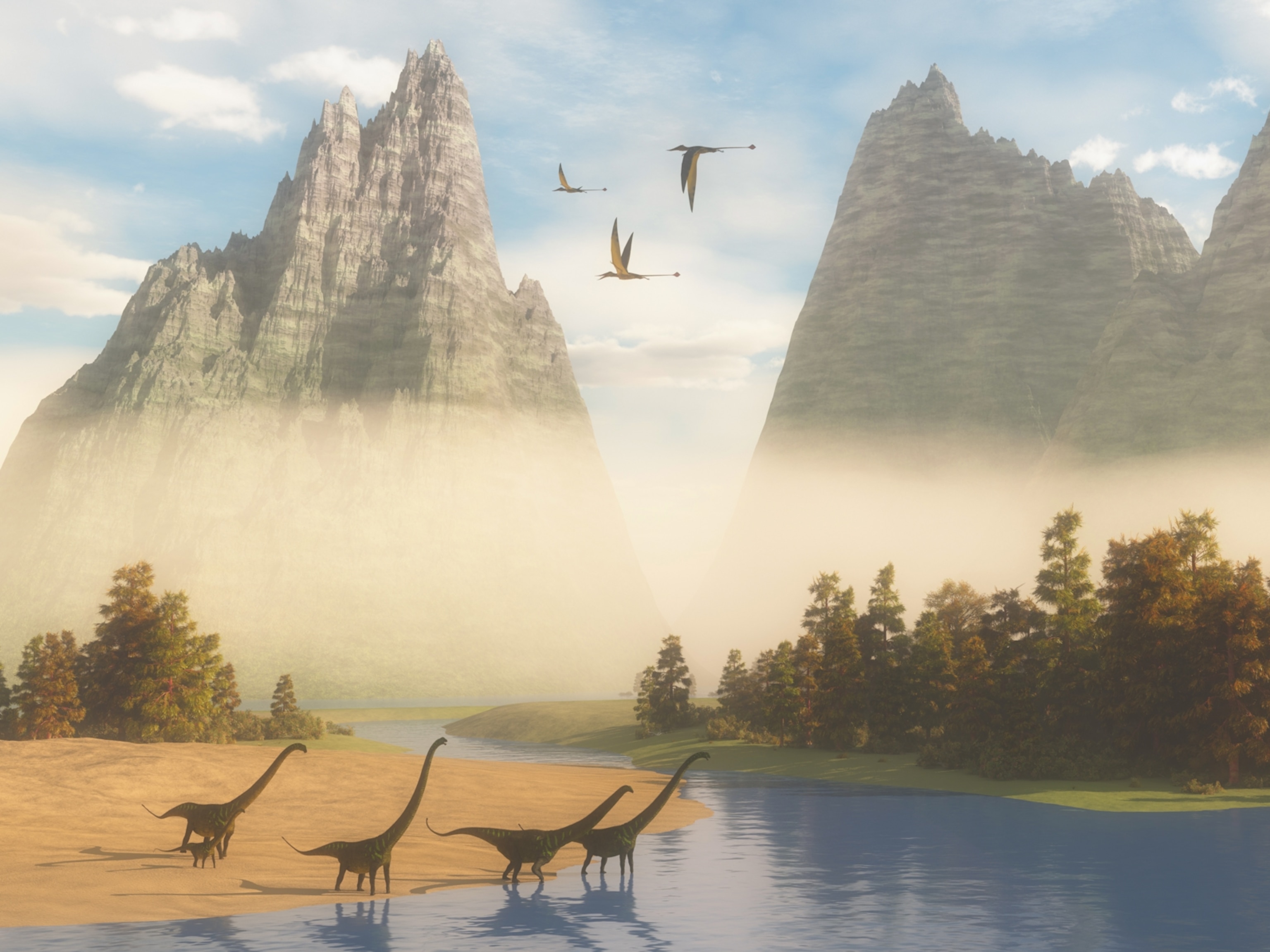
Prehistoric Bird Had Wings Like Nunchucks
"A lot of birds have weaponry. They just don't have anything like this."
A flightless bird with wings like martial arts weapons once thrashed its foes on what's now Jamaica, a new study says.
Dubbed Xenicibis, the prehistoric bird wielded its unusual wings like nunchucks, or nunchakus, swinging its upper arms so that thick, curved hand bones hinged at the wrist would deliver punishing blows.
The weapon-like wings are so unique that study co-author Nicholas Longrich of Yale University at first assumed the odd limbs were evidence of a deformity.
"There are a lot of birds that do have weaponry," Longrich said. "They just don't have anything like this."
(Related: "Giant 'Terror Birds' Used Their Heads Like Hatchets.")
Wings That Bear Arms
Xenicibis is an extinct member of the ibis family that grew to be the size of a large chicken. Although the ancient animal had been known for years, new analysis of several recently discovered partial skeletons has only now revealed the odd wing bones.
Wings are among the most powerful parts of birds, and some modern species boast specialized wing weapons. Screamer birds, for instance, use daggerlike spurs to fight for mates, while steamer ducks have wrist knobs that can break bones or even kill other birds. (Get bird wallpapers.)
Since Xenicibis was flightless, Longrich and colleagues think the ancient bird evolved to have wings that were even more specialized for combat. (Related pictures: "Giant Fossil Bird Found With Spiky 'Teeth.'")
Examinations of the skeletons uncovered evidence of past violence—one wing had a fractured hand bone, and another had a centimeter-thick upper-arm bone that had been cleanly snapped in half.
The bird's living ibis relatives are anatomically similar except for the "weapon wings," so modern ibis behavior may shed light on when and how Xenicibis used its built-in arsenal. Male ibis, for example, regularly battle one another over territories for nesting and feeding. (See a picture of white ibis.)
But Xenicibis may have also needed its powerful wings to fight off other threats.
"Most flightless birds, like the dodo, had absolutely no predators around. But Jamaica had many snakes, raptors, and other potential predators," Longrich said. "So maybe they just needed a bit more defense."
(Also see "Dodo Skeleton Found on Island, May Yield Extinct Bird's DNA.")
Did Humans Dine on Nunchuck Wings?
Aside from the weapon wings, Longrich and colleagues are most curious about the ultimate fate of the prehistoric birds.
Fossils indicate Xenicibis lived at least as recently as 12,000 years ago. But the record is too sparse at this point to know exactly when they vanished—or if ancient humans might have been involved.
"Did they disappear long before people arrived in Jamaica [several thousand years ago] or last long enough for people to wipe them out?" Longrich said.
"They were a convenient size for a family dinner and couldn't fly. Humans are pretty handy with clubs also, so it might not have been a very fair fight. But at this point we just don't know."
The weapon-winged prehistoric bird is described this week in the journal Proceedings of the Royal Society B.





